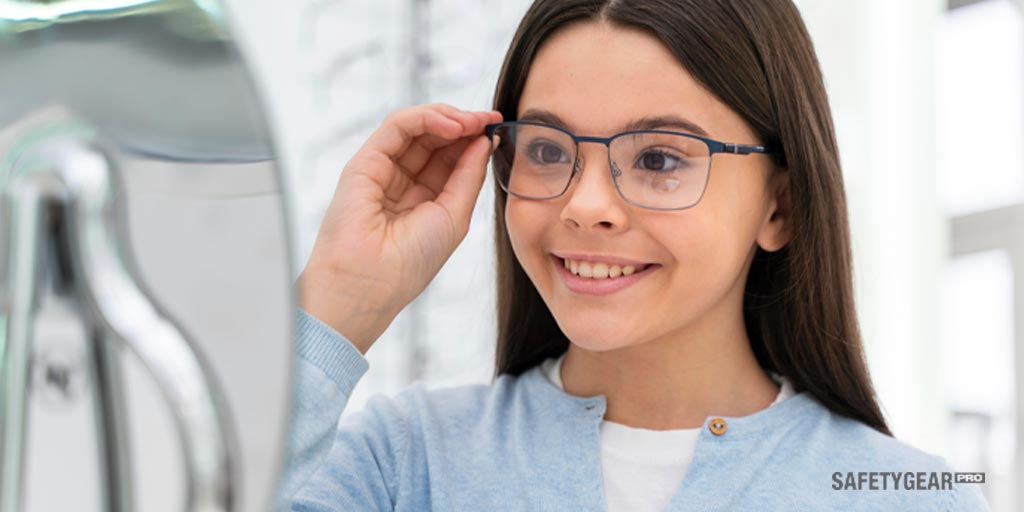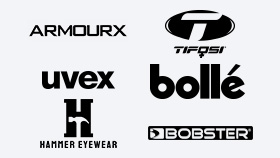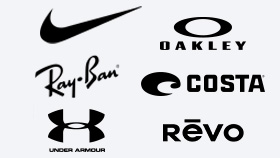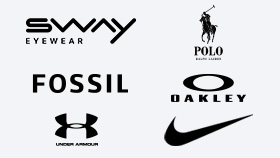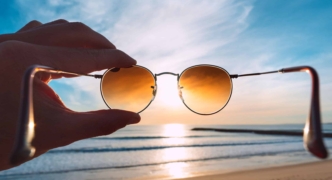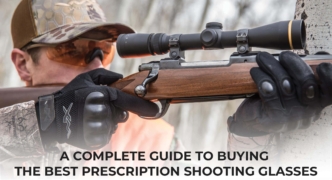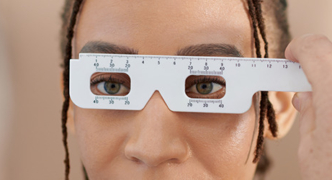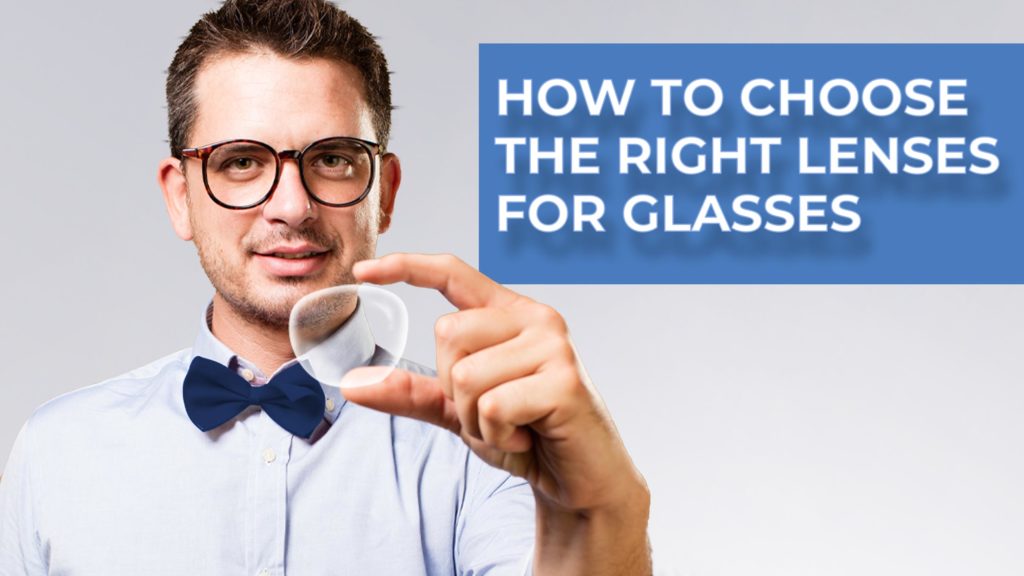
The Definitive Guide To Choosing the Right Lenses How To Guide
Lens Materials
The first step to finding a great pair of prescription safety glasses is understanding the specific hazards that your eyes face on a regular basis. Are you in an environment where chemical exposure is a possibility? Are you at risk of projectile impact on your job site? Take factors like these into consideration when you’re shopping for bifocal safety glasses and look for a pair that’s specifically designed for the eye hazards you may encounter.

Vision Needs
Consider where you are going to be riding. This can make a big difference in what will be the right eyewear for your needs.
- Track: On the track, you primarily need to look forward (blind spots are not typically as important) and you are dealing with a lot of wind. Typically, a helmet with a visor will be the best option. If you need corrective lenses, consider wearing contact lenses underneath.
- Street: When you are riding on the street, you likely aren’t going as fast as on the track. However, there are other drivers to contend with. Motorcycle safety glasses or goggles are likely ideal options at lower speeds. At higher speeds, you may need a helmet visor.
- Off-Road: On the trail, you will usually be at much lower speeds than the track or street. However, there is a lot of debris and mud to deal with. Usually, motorcycle goggles are the best option.

Lens Coating
You will measure your temple-to-temple width to figure out the total width of your glasses, including the frames, lenses, and bridge. This measurement is used to determine the most appropriate full width of prescription glasses online to fit your face best. For this measurement, you will need a mirror and a rule. Using a photo for this measurement is inappropriate because it cannot be scaled to the accurate sizing; use only a mirror and a ruler for best results. You will measure from your left temple to your right temple. To do so, hold the ruler below your eyes in a horizontal position and measure the distance between the two temples and record your measurement for total width.
- Note
Another vital part of gathering all of your face measurements is yet another temple measurement; this one isn’t from your temples; it is for the temples or arms of the glasses. To determine the correct length of temples for your glasses, you will use your total width. Temples on glasses usually come in three preset sizes but can also be found in ranges from 4.7 – 5.9 inches. The larger the whole width of your face, the larger the temples will need to be on your glasses.
Blue Light Blocking Lenses
Finally, you should consider upgrading your eye protection. Many modern designs were created with vision in mind. They are specially intended to make it easier to see while staying safe. You could switch to a pair of safety glasses with good peripheral visibility, for example. A small upgrade can potentially make a big difference.
If your eyewear is older, it may have superficial damage or discoloration that makes seeing harder. Again, upgrading to a newer option can help. It is important to buy new protective gear periodically to ensure that it can keep you completely safe.

Lens Index
To choose the best prescription glasses online, the final piece of information you need to determine is your face shape. Your lens shape and frames should complement your face shape. For this measurement, you will need a mirror, but a photo and a friend will also likely be helpful. Compare your face to these four basic shapes to determine which one your face best corresponds with: circle, square, oval, or heart-shaped. This determination will help match your face shape to the ideal lens shape when shopping for frames.
- Features
Using facial features, you can determine which face shape you have. Using your face shape, you will be able to select glasses to match. Oval faces have broad and high cheekbones that come to a rounded end at the chin and the forehead. Square faces have broad foreheads and defined jawlines. Heart-shaped faces have wide foreheads with high cheekbones. Circle or round faces feature equal length and width and often appear wider across the cheek area. Remember that safety glasses and goggles require a snug fit for regulatory wear. Still, other prescription glasses may be worn in oversize styles that are more trendy if that is your preference. Consider the following combinations:
- Oval + oversize, square, broad, rectangular, or trapezoid
- Square + rounded and dark, rimless, cat-eye or semi-rimless
- Heart + thin, light, wide, rimless, or aviator
- Circle + full-rim, semi-rimless, angular, broad, or sharp-angled
To ensure that your shopping experience is as easy and stress-free as possible, be sure to complete your measurements before logging on and making selections for prescription glasses online.

FAQs
Can I Put New Prescription Lenses in My Old Frames?
Yes and no. If you need to replace your lenses due to breakage, scratching, or if the prescription was in error, you can replace them in your current frames as long as the frames are relatively new. In most cases, however, it’s best to order a new pair of frames. Older frames can become dry and brittle and crack when mounting new lenses, or they may not hold the lenses in as well as new frames would. Your optician (or lab) will inspect your frames and let you know if it’s possible to reuse them.
How Do I Know What Strength Reading Glasses To Get?
As long as you don’t need another type of vision correction, you can buy reading glasses yourself at a local or online shop. You can download a diopter chart that has several lines of text in different sizes, each with a (+) sign in front of the text block. That plus sign will tell you what power or strength of correction you need. It’s important to keep in mind your usual working distance when you read the chart. Make sure you hold it at the distance you usually read to get accurate power reading for your glasses.
Should I Give My Eyes an Occasional Break From Wearing Glasses?
No — it’s a misconception to think your eyes need a rest from wearing your glasses. Wearing prescription glasses all the time (if you need them) cannot harm your eyes or make your vision worse over time. On the contrary, not wearing your glasses when you need them can cause eye strain, resulting in headaches and, of course, blurred vision.
What Should I Take Into Account When Choosing Glasses?
-
- Your lifestyle
-
- Your personality/sense of style
-
- The shape of your face
-
- The color of your skin
-
- Your hairstyle
- The type of correction you need
How Long Should My Prescription Glasses Last?
The answer depends on several factors:
-
- How soon your vision needs change
-
- How you take care of your glasses
-
- The quality of frame
-
- The quality of the lenses
- What coatings are on the lenses
In most cases, a good pair of glasses should last 1-3 years. A good pair of glasses can have a huge impact on your daily life. It’s important to be well-informed about all the available options when you’re ready to buy your next pair. Once you are settled on what type of lenses you want, you can turn your focus to choosing a fabulous new frame style. For a huge selection of frames and lens styles to suit every taste and budget, visit Safety Gear Pro
